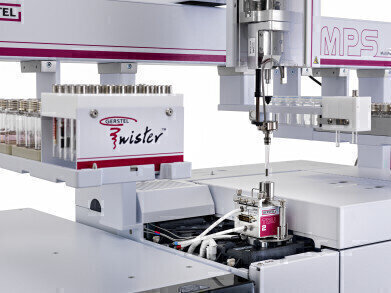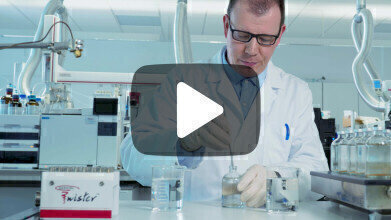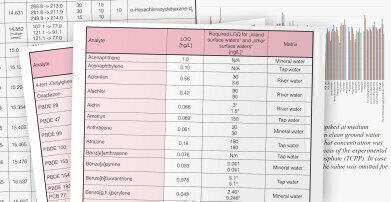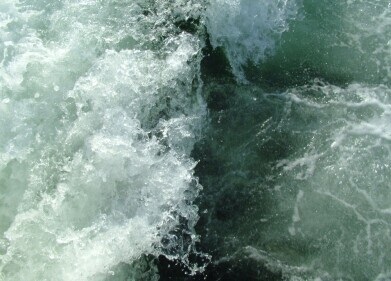Environmental Laboratory
Ultra-sensitive analysis of surface water with sediment for 100 EU-WFD compounds
May 13 2020
A sorbent-based method efficiently extracts 100 contaminants from surface water with or without sediment using only a minor amount of solvent. Based on just a 100 mL sample volume, EU Water Framework Directive (EU-WFD) performance requirements are met in combination with GC-MS/MS analysis.
The EU Water Framework Directive (WFD) (2013/39/EU) requires monitoring of water bodies for a range of chemical pollutants with limits of quantification (LOQs) in the low- to sub-nanogram range per liter, for example 0.051 ng/L for benzo[a]pyrene. This is only possible when combining a powerful analyte concentration technique, such as Stir Bar Sorptive Extraction (SBSE), with a highly sensitive analysis technique, such as Thermal Desorption (TD)-GC-MS/MS.
SBSE is performed with the GERSTEL Twister®, a glass coated magnetic stir bar with a robust sorbent layer. In this project, polydimethylsiloxane (PDMS) was used. Like liquid–liquid extraction (LLE), SBSE relies on partitioning, i.e. reaching equilibrium between the aqueous sample and the sorbent phase. Analyte extraction is performed while the Twister stirs the sample. A large number of samples can be extracted simultaneously on multi-position stir plates for high throughput. The Twister is removed from the sample, dried and placed in a sealed sample tray position on the MultiPurpose Sampler (MPS). Following automated thermal desorption in a glass tube placed in the Thermal Desorption Unit (TDU 2), analytes are focused in a GC inlet (GERSTEL CIS 4) and transferred to the GC column. In splitless mode, extracted analytes are transferred 100% for extreme sensitivity. SBSE normally requires no solvent. In this case a small amount of solvent, but no methylene chloride, is used making it an environmentally sustainable analysis.
In addition to reaching the prescribed LOQs for water, quantitative determination of particle adsorbed compounds is performed based on a dual stage extraction: An internal standard is added and the Twister stirs the 100 mL sample for five hours to extract dissolved organic compounds. The Twister is removed and an organic modifier is added to the sample along with a second Twister. Particle adsorbed compounds are now released and extracted overnight at elevated temperature. The two Twisters analysed together by TD-GC-MS/MS using Multi-Reaction Monitoring (MRM) Mode (Agilent Technologies 7890GC/7010 TripleQuadrupole MS).
GC compatible compounds listed in the EU WFD were determined at required levels, or below, with three exceptions: Cypermethrin, heptachlor, and heptachlorepoxide. These are notoriously hard to determine at required levels. A few examples of required limits of quantitation for surface water and SBSE results: Dichlorvos: 0.18 ng/L (SBSE: 0.073 ng/L). Benzo(a)pyrene: 0.051 ng/L (SBSE: 0.033 ng/L). Pentachlorobenzene: 2.1 ng/L (SBSE: 0.075 ng/L). Comparable results were achieved for around 100 other relevant contaminants. Relative standard deviations (RSDs) near the respective LOQs were between two and ten percent with a median of 6.9 percent for the vast majority and trueness between 90 and 110 percent. Extraction and quantification of particle adsorbed analytes was confirmed using certified reference sediment (WEPAL SETOC 745). For more details, please see the Application note or the GERSTEL Solutions Magazine article.
Digital Edition
IET 34.2 March 2024
April 2024
Gas Detection - Biogas batch fermentation system for laboratory use with automatic gas analysis in real time Water/Wastewater - Upcycling sensors for sustainable nature management - Prist...
View all digital editions
Events
Apr 30 2024 Melbourne, Australia
Apr 30 2024 Birmingham, UK
May 03 2024 Seoul, South Korea
May 05 2024 Seville, Spain
May 06 2024 Minneapolis, MN, USA




















